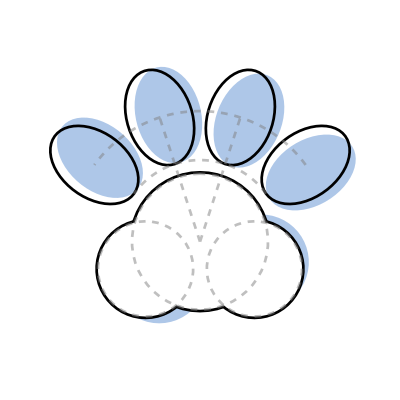Bar Options
All the bar function can be configured by passing in
bar_options, which is an object with the following properties:
gap : number,
yrange? : [number, number],
yticks? : number[],
bbox? : [Vector2, Vector2],
ticksize : number,
Plotting
You can prepare the data in the form of
datavalues : number[] and
datanames : string[].
let data = [10, 8, 12, 15, 7];
let b = bar.plot(data);
draw(b);
bar.plot (
datavalues
:
number[] , bar_options?
:
Partial<bar_options> )
:
Diagram
let data = [10, 8, 12, 15, 7];
let b = bar.plot(data);
draw(b);
let datanames = ['a', 'b', 'c', 'x', 'ye'];
let xx = bar.xaxes(datanames);
draw(xx);
bar.xaxes (
datanames
:
string[] , bar_options?
:
Partial<bar_options> )
:
Diagram
let datanames = ['a', 'b', 'c', 'x', 'ye'];
let xx = bar.xaxes(datanames);
draw(xx);
let data = [10, 8, 12, 15, 7];
let yy = bar.yaxes(data);
draw(yy);
bar.yaxes (
datavalues
:
number[] , bar_options?
:
Partial<bar_options> )
:
Diagram
let data = [10, 8, 12, 15, 7];
let yy = bar.yaxes(data);
draw(yy);
Plot the entire thing
let baropt = {
yrange : [0, 20],
}
let data = [10, 8, 12, 15, 7];
let name = ['orange', 'apple', 'c', 'd', 'ye'];
let b = bar.plot(data, baropt).fill('lightblue');
let xx = bar.xaxes(name, baropt).move_origin_text('top-left').textangle(to_radian(30));
let yy = bar.yaxes(data, baropt);
draw(b, xx, yy);
let baropt = {
yrange : [0, 20],
}
let data = [10, 8, 12, 15, 7];
let name = ['orange', 'apple', 'c', 'd', 'ye'];
let b = bar.plot(data, baropt).fill('lightblue');
let xx = bar.xaxes(name, baropt).move_origin_text('top-left').textangle(to_radian(30));
let yy = bar.yaxes(data, baropt);
draw(b, xx, yy);
Interact with standard plot
bar data can be translated into
axes_options by setting
xrange into
[-1, data.length].
let data = [10, 8, 12, 15, 7];
let name = ['a', 'b', 'c', 'd', 'e'];
let baropt = {
yrange : [0, 20],
bbox : [V2(0,0), V2(10,10)],
}
let axopt = {
xrange : [-1, data.length],
yrange : baropt.yrange,
bbox : baropt.bbox,
}
let ax_f = axes_transform(axopt);
let b = bar.plot(data, baropt).fill('lightblue');
let xx = bar.xaxes(name, baropt);
let yy = bar.yaxes(data, baropt);
let p = plot(range(0, data.length), data, axopt).strokedasharray([5]);
let c = circle(0.2).fill('red').position(ax_f(V2(2, data[2])));
draw(b, xx, yy, p, c);
let data = [10, 8, 12, 15, 7];
let name = ['a', 'b', 'c', 'd', 'e'];
let baropt = {
yrange : [0, 20],
bbox : [V2(0,0), V2(10,10)],
}
let axopt = {
xrange : [-1, data.length],
yrange : baropt.yrange,
bbox : baropt.bbox,
}
let ax_f = axes_transform(axopt);
let b = bar.plot(data, baropt).fill('lightblue');
let xx = bar.xaxes(name, baropt);
let yy = bar.yaxes(data, baropt);
let p = plot(range(0, data.length), data, axopt).strokedasharray([5]);
let c = circle(0.2).fill('red').position(ax_f(V2(2, data[2])));
draw(b, xx, yy, p, c);
